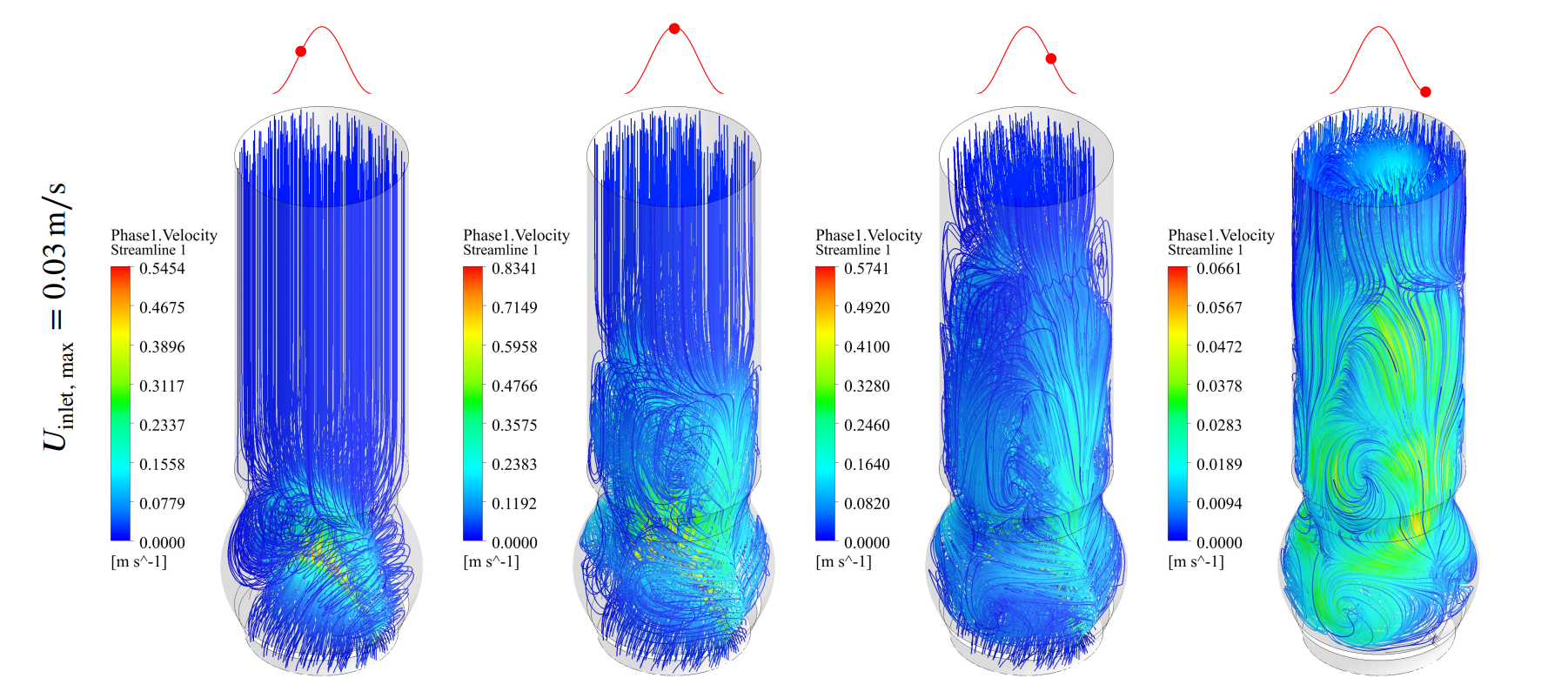I. Hemodynamic Simulation of Supra Left Ventricular Heart Blood Flow Coupled with Coronary Arteries
Project Type: TUBITAK 1001
Project Number: 124M416
Project Budget: 1.650.000 TL
Project Time: February 2025 - February 2028
Project Team: Emre Cenk ERSAN, Reza DARYANİ, Hacer DUZMAN, Emirhan YİĞİT, Müge Yaren YAŞARTÜRK, Ahmet Can TEKELİ, M. Serdar ÇELEBİ
This project aims to develop a comprehensive and realistic cardiovascular hemodynamic model that integrates the coronary arteries, sinus of Valsalva, ascending and descending aorta, aortic arch, and carotid artery entries into a single numerical framework. The model will incorporate two-phase, non-Newtonian blood flow with fully coupled two-way fluid–structure interaction (FSI) and advanced boundary conditions using multi-scale Windkessel and coronary lumped parameter (LPM) models. It will also simulate cardiac contraction and relaxation to account for momentum effects on blood flow. Integrated with VR/XR-based virtual immersion and 3D bioprinting technologies, the model will allow preoperative planning, disease diagnosis, and training by enabling virtual manipulation and physical reproduction of patient-specific anatomy. The project will provide in-depth hemodynamic evaluation of seven critical cardiovascular conditions, including LVOT abnormalities, aortic dissection, thrombosis, coronary stenosis, anomalous coronary ostium, AF-related ischemia, and interventions like PCI and CABG, all validated through clinical data and conducted through eight structured work packages.
For more information, please visit the project webpage.
II. Computational Hemodynamic Modelling of Prosthesis Heart and Venous Valves
Project Type: TUBITAK 1001
Project Number: 120M671
Project Budget: 750.000 TL
Project Time: March 2021 - February 2024
Project Team: Emre Cenk ERSAN, Reza DARYANİ, Hacer DUZMAN, Emirhan YİĞİT, Müge Yaren YAŞARTÜRK, Furkan CÖMERT, Suna DENİZ, Orkun Mert ÜSTÜN, Okan ÖZDEŞ, M. Serdar ÇELEBİ
This project focuses on developing patient-specific, physiologically realistic prosthetic heart valves (PHV) and prosthetic venous valves (PVV) using advanced computational hemodynamic modeling. A two-phase blood flow model representing plasma and red blood cells is coupled with detailed fluid–structure interaction (FSI) simulations to accurately capture the mechanical and hemodynamic behavior of heart and venous valves. Hemodynamic index models such as time-averaged wall shear stress (TAWSS), oscillatory shear index (OSI), relative residence time (RRT), and time-averaged transverse WSS (TransWSS) for Valvular Heart Disease (VHD) and Chronic Venous Insufficiency (CVI) patients are computed.
For more information, please visit the project webpage.

III. Computational Modelling of Deep Vein Thrombosis
Project Type: TUBITAK 1001
Project Number: 117M430
Project Budget: 870.000 TL
Project Time: March 2018 - August 2021
Project Team: Burak YAVUZ, Hamed PAHLAVANİ, Ali İhsan İŞGÜDER, M. Serdar ÇELEBİ
This project focuses on developing a physiologically realistic computational model of Deep Vein Thrombosis (DVT), aiming to simulate the complex interactions between blood flow, venous walls, and venous valves—particularly parietal venous valves. The model integrates patient-specific and synthetic geometries derived from B-mode duplex ultrasonography and similar imaging modalities. It incorporates both single-phase and two-phase blood flow (plasma and red blood cells) with viscoelastic and shear-thinning properties. A fluid–structure interaction (FSI) model captures the dynamic behavior of venous walls and valve leaflets. The project also proposes a shear-stress-based thrombosis risk index for non-invasive early diagnosis of DVT and identifies optimal flow parameters for mechanical treatment strategies such as IPC and EPC. Model validation is carried out using clinical data from two different patients to ensure accuracy in risk assessment and personalized treatment planning.
For more information, please visit the project webpage.